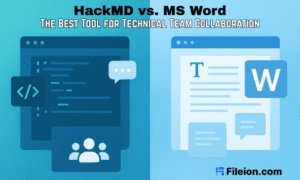The fusion of financial technology (fintech) and mapping is revolutionizing industries in ways previously unimaginable. From optimizing logistics to enhancing risk assessment, fintech-powered mapping solutions are unlocking new opportunities for businesses and consumers alike.
The Intersection of Fintech and Mapping
Fintech has long been associated with digital payments, blockchain, and robo-advisors. However, its integration with geospatial technology is creating a powerful synergy. By leveraging real-time data, artificial intelligence (AI), and the Internet of Things (IoT), fintech is transforming how we navigate financial decisions tied to location-based insights.
For instance, ride-hailing platforms like Uber and Lyft use dynamic pricing models influenced by traffic patterns and demand hotspots—a perfect blend of fintech and mapping. Similarly, insurance companies now employ geospatial analytics to assess property risks more accurately.
Key Fintech Applications in Mapping
Location-Based Financial Services
Fintech companies are using mapping to offer hyper-personalized financial services. Mobile banking apps now integrate geolocation to detect fraudulent transactions by flagging purchases made in unusual locations. Additionally, lenders use geospatial data to evaluate loan applications, especially in agriculture and real estate, where land value and productivity play crucial roles.
Smart Logistics and Supply Chain Optimization
E-commerce giants and logistics firms rely on fintech-enabled mapping to streamline deliveries. Real-time tracking, route optimization, and fuel cost calculations reduce operational expenses. Moreover, blockchain-powered smart contracts automate payments once goods reach specific checkpoints, ensuring transparency and efficiency.
Risk Assessment and Insurance Underwriting
Insurers harness geospatial fintech to refine risk models. By analyzing flood zones, crime rates, and traffic accident hotspots, they adjust premiums dynamically. For example, telematics in auto insurance tracks driving behavior via GPS, rewarding safe drivers with lower rates.
Real Estate and Property Technology (PropTech)
Fintech-driven mapping tools help buyers and investors make informed decisions. Platforms like Zillow integrate mortgage calculators with neighborhood analytics, displaying crime statistics, school ratings, and future development plans. This transparency empowers users to assess property investments more accurately.
Disaster Response and Financial Inclusion
During natural disasters, fintech mapping aids relief efforts by identifying affected areas and directing funds efficiently. Mobile payment systems enable quick aid distribution to displaced populations. Additionally, in remote regions, digital banking leverages geolocation to extend financial services to the unbanked.
The Benefits of Fintech-Enhanced Mapping
The marriage of fintech and geospatial technology offers numerous advantages:
- Improved Accuracy – AI-driven mapping reduces human error in financial assessments.
- Cost Efficiency – Automated processes cut down operational expenses.
- Enhanced Security – Geolocation adds an extra layer of fraud detection.
- Better Customer Experience – Personalized services increase user satisfaction.
- Data-Driven Decision Making – Businesses gain actionable insights from spatial analytics.
Challenges and Future Outlook
- Despite its potential, fintech mapping faces hurdles:
- Data Privacy Concerns – Collecting location data raises security and ethical questions.
- Regulatory Compliance – Governments must establish frameworks for geospatial fintech applications.
- Infrastructure Limitations – Rural areas may lack the connectivity needed for real-time mapping.
Looking ahead, advancements in 5G, AI, and decentralized finance (DeFi) will further propel this synergy. As fintech continues to evolve, its integration with mapping will redefine industries, making financial services more accessible, efficient, and intelligent.
Conclusion
Fintech applications in mapping represent a groundbreaking frontier with vast potential. From optimizing supply chains to democratizing financial access, the possibilities are endless. While challenges remain, the ongoing innovation in this space promises a future where finance and geography seamlessly intersect. Businesses that embrace this trend will gain a competitive edge, unlocking new opportunities in an increasingly data-driven world.
By staying ahead of these developments, companies and consumers alike can harness the power of fintech mapping to navigate tomorrow’s financial landscape with confidence.



































